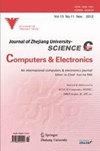IFPUG与UCP功能尺寸测量单位转换的实验研究
Journal of Zhejiang University-Science C-Computers & Electronics
Pub Date : 2014-03-12
DOI:10.1631/jzus.C1300102
引用次数: 3
摘要
在软件开发组织中,功能大小度量(FSM)方法的使用近年来不断增长。同样,面向对象(OO)技术已经成为设计软件的标准,特别是用例是指定功能需求最常用的技术之一。主FSM方法不包括从用例分析中度量软件功能的具体规则。为了解决这个问题,一些其他的方法,如克莱默的功能测量法已经发展。因此,对于那些愿意使用OO功能度量方法以促进用例计数过程的组织来说,主要问题之一是如何将他们的投资组合功能大小从以前采用的FSM方法转换为新方法。本研究的目的是找到一种统计关系,将国际功能点用户组(IFPUG)功能点分析(FPA)方法测量的软件功能大小单元转换为Kramer-Smith的用例点(UCP)方法,反之亦然。提出了正确收集数据的方法,并对得到的结果进行了分析,得出了这种相关性的线性和非线性方程。最后给出了转换因子和相应的转换区间,建立了统计关系。本文章由计算机程序翻译,如有差异,请以英文原文为准。
An experimental study on the conversion between IFPUG and UCP functional size measurement units
The use of functional size measurement (FSM) methods in software development organizations is growing during the years. Also, object oriented (OO) techniques have become quite a standard to design the software and, in particular, Use Cases is one of the most used techniques to specify functional requirements. Main FSM methods do not include specific rules to measure the software functionality from its Use Cases analysis. To deal with this issue some other methods like Kramer’s functional measurement method have been developed. Therefore, one of the main issues for those organizations willing to use OO functional measurement method in order to facilitate the use cases count procedure is how to convert their portfolio functional size from the previously adopted FSM method towards the new method. The objective of this research is to find a statistical relationship for converting the software functional size units measured by the International Function Point Users Group (IFPUG) function point analysis (FPA) method into Kramer-Smith’s use cases points (UCP) method and vice versa. Methodologies for a correct data gathering are proposed and results obtained are analyzed to draw the linear and non-linear equations for this correlation. Finally, a conversion factor and corresponding conversion intervals are given to establish the statistical relationship.
求助全文
通过发布文献求助,成功后即可免费获取论文全文。
去求助
来源期刊
自引率
0.00%
发文量
0
审稿时长
2.66667 months

 求助内容:
求助内容: 应助结果提醒方式:
应助结果提醒方式:


